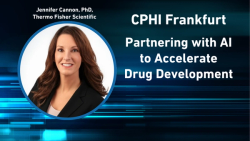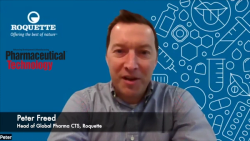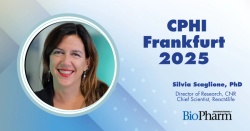
OR WAIT null SECS
- About Us
- Advertise
- Contact Us
- Editorial Info
- Editorial Advisory Board
- Do Not Sell My Personal Information
- Privacy Policy
- Terms and Conditions
© 2025 MJH Life Sciences™ , Pharmaceutical Technology - Pharma News and Development Insights. All rights reserved.
Antibiotic Drug Development Makes a Turning Point
The growing threat and spread of antimicrobial resistance continue to ring alarm bells worldwide.
The growing threat and spread of antimicrobial resistance continue to ring alarm bells worldwide. “The most important medicine known to mankind,” as Karl Rotthier, president of DSM Sinochem Pharmaceuticals, calls it, is facing a bleak future. On one hand, there is an increasing sense of urgency to develop new antibacterial drugs, while on the other, it is crucial that we find practical solutions to tackle this problem, such as addressing the misuse and abuse of existing antibiotics.
Figures from the European Centre for Disease Prevention and Control attribute more than 25,000 deaths in Europe alone to antimicrobial resistance every year. This crisis costs more than EUR1.5 billion in healthcare expenses and productivity losses. The Cabinet Office of the United Kingdom estimated that each year, 80,000 people in the UK could die from antibiotic-resistant infections if no new antibiotics are introduced. The following steps have been recommended in a
commissioned by the UK prime minister:
- Increasing funding to boost the development of new antibiotics
- Implementing measures to ensure efficient use of existing antibiotics, whether by changing the dosing or combining them with other agents or antimicrobials that could slow down the spread of drug resistance and treat resistant infections more effectively
- Supporting the development and use of relevant diagnostic technologies so that more patients are given the right antibiotics for their infections and unnecessary antibiotic prescribing is eliminated or reduced
- Investing in the people who will solve the problem, such as next-generation doctors, scientists, microbiologists, pharmacologists, medical chemists, and biochemists, among others, who will be involved in finding novel approaches and therapies for bacterial infections
- Modernizing the surveillance of drug resistance globally, for example, by using the latest advances in molecular testing and informatics to improve access to real-time global-scale surveillance information.
With antimicrobial resistance hitting the headlines more frequently than ever, 2014 emerged as a flagship year in the history of antibacterial drug development, according to Frost and Sullivan. FDA approved three new antibiotics in 2014-dalbavancin (Dalvance, Durata Therapeutics), oritavancin (Orbactive, The Medicines Company), and tedizolid phosphate (Sivextro, Cubist Pharmaceuticals). Dalbavancin has received marketing authorization from EMA. European approval for the other two agents are expected in 2015 as the Committee for Medicinal Products for Human Use (CHMP) adopted a positive opinion on them.
An analysis on antibiotics R&D by Frost and Sullivan found that nearly 80% of drugs in the development pipeline are from smaller pharmaceutical and biotech companies, of which half have had no experience bringing a product to market. GlaxoSmithKline, AstraZeneca, Janssen, and Sanofi-Aventis were among the few big names investing in the antibacterial drug development space. Roche, who exited this market in 1999, recently made a come back in antibiotics R&D and is collaborating with three small biotech companies, Pylor, Discuva, and Spero Therapeutics.
It goes without saying that R&D is risky business, with high failure rates. Developing new antibiotics is no easy task and the low return on investment is often cited as the main cause for pharma’s lack of interest in this field. But antibiotic incentives are now on the rise, with the European Commission launching action plans such as the Innovative Medicines Initiative (IMI) and FDA implementing the Generating Antibiotic Incentives Now (GAIN) Act. Frost and Sullivan healthcare senior research analyst, Aiswariya Chidambaram believes that “collaborations in the form of public-private partnerships among industry, academia, investors, and key opinion leaders will effectively address the vast unmet clinical and commercial needs in the antibacterial drugs market and quicken the journey towards commercialization.” Moreover, with tax credits for antibiotic R&D now available, we could see five or six new candidates entering the pipeline every year.



